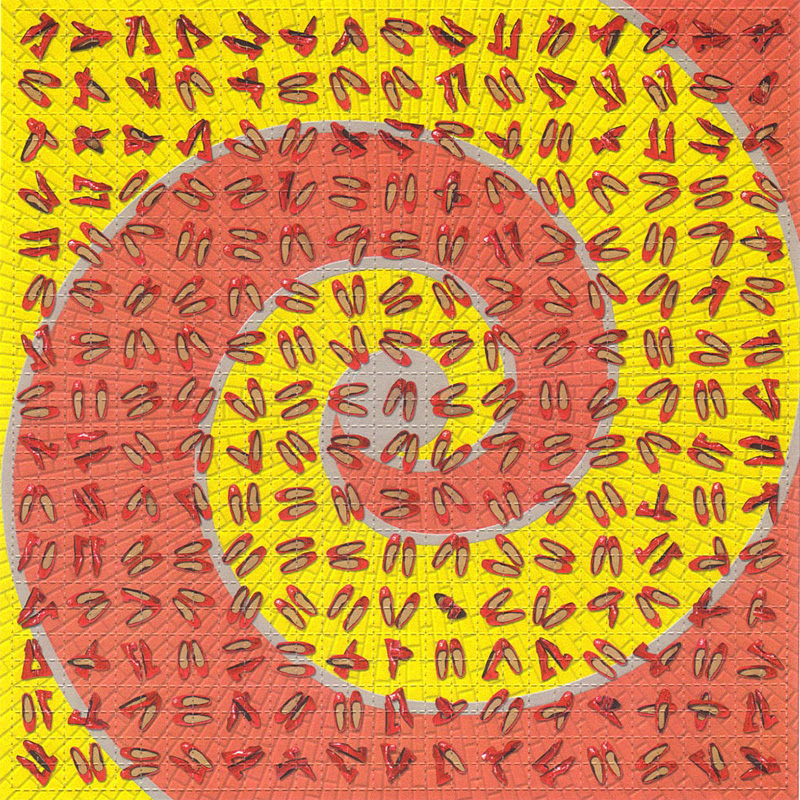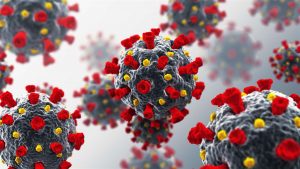I imagine most of you have heard of LSD, also known as acid or Lucy. You probably picture the hippy movements of the 60s or people tripped out of their minds, screaming at a melting world as they slip into insanity. It’s hard to deny that it’s a powerful cultural icon in its own right, partly symbolic of a particular generation and burying its influence in music and modern counterculture. LSD’s not quite the drug of choice these days, but you’ll still see it around if you’re one of those scoundrels who breaks the law and makes your mother cry at night. We’re no strangers to discussing drugs here at Weird World Wire, so I think it’s worth doing a deep dive into some LSD history and seeing just what we can find.
Origin of LSD History
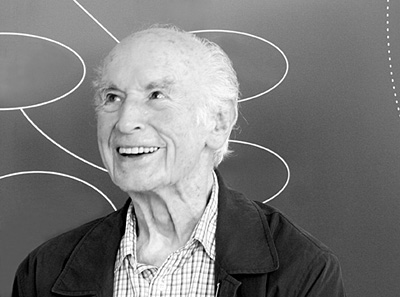
Our story begins in Switzerland in the year of 1938. Chemist Albert Hofmann was working for a company called Sandoz, creating new pharmaceutical products and experimenting with what could be done. At this time especially, there was a great deal people didn’t know, so it was easy to have very unexpected reactions. During attempts to research lysergic acid derivatives, LSD was created almost by accident on November 16th of 1938. This incredible discovery was promptly… Shelved and ignored for the next five years. You see, scientists weren’t so much in the business of rubbing their tongues over random chemicals they make, so the psychedelic properties were completely unknown!
It wasn’t until April 16th of 1943 that Hofmann decided to take another look at his creation. Thank Christ he was living in Switzerland, pretty much any other country in Europe could well have resulted in LSD being lost forever by the sheer carnage engulfing everything. While re-creating the LSD, a mistake occurred like in so many mad scientist movies and Hofmann accidentally gave himself a dose. Hofmann later described the incredible effects it had on him, particularly an “Uninterrupted stream of fantastic pictures, extraordinary shapes with intense, kaleidoscopic play of colors.” How much Hofmann took that day, we can’t really know. Given he states the effects lasted only two hours, he likely had only a rather small dose. True history wasn’t to be made until three days later.
Most of you probably know of 420, the weed number. Every 20th of April (Hitler’s birthday too, coincidentally) potheads around the world celebrate their marvelous herb. LSD has a similar holiday, Bicycle Day, the 19th of April just a day before, the real start of LSD history. This was the first intentional trip as Hofmann took 0.25 milligrams, expecting a ‘threshold dose’. In actually, the threshold was 0.02 milligrams, so what he took was a rather large dose indeed. The name of the holiday was cemented as Hofmann decided he needed to go home, asking his laboratory assistant to escort him there, which in the Swiss town of Basel was customarily done by bicycle. So here we have a genius Swiss chemist in broad daylight on a bicycle, tripping off his tits as the world’s first acidhead. I hope we can all agree this makes him a legend.
After initially enduring fear, paranoia that his neighbor was a witch and that he had been poisoned, after getting some reassurance, his mood turned to one of sheer bliss and enjoyment associated with a good trip. This positive experience led to the beginning of Hofmann’s lifelong campaign to see the drug used in psychiatrics to help people and make the world a better place. So that’s the history of LSD’s creation! But do we stop there? Hell no, we’ve just started.
Early Uses of LSD
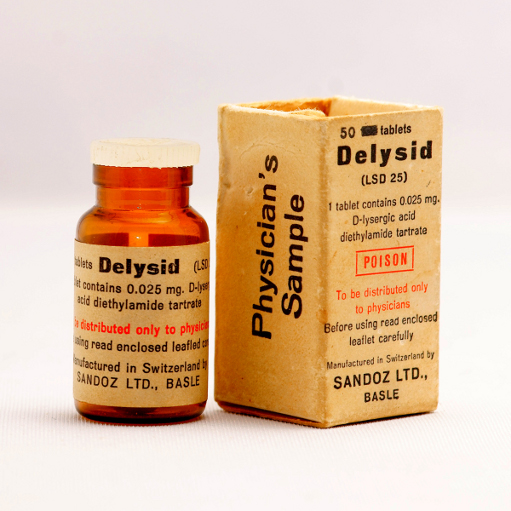
When Hofmann’s research was presented to the higher-ups at work, there was certainly quite some interest. It was too soon to just start throwing it into the market, but after being packaged with the tradename Delysid, LSD started being sold for psychiatric purposes in 1947. Initial goals were for psychiatrists themselves to take the drug in hopes of better understanding the condition of their patients, but experimentation led to limited use for patients as well. It wasn’t used in wide amounts yet, but the drug became well known among psychology students who would take the drug as part of their education. Positive reports from famous magazine Time further cemented the legitimacy of this soon-to-be Class A narcotic. The results were too good to ignore, with creatives lauding it for expanding minds and even testing on Alcoholics Anonymous meetings reporting major success in preventing relapse.
All the same, throughout the 1950s, research remained painfully slow, unfortunate for the study of LSD history. In the UK for instance, an LSD unit was set up by Dr Ronald A. Sandison in 1958 which was to run until 1965. In all that time, 683 patients were treated with the drug. Hardly mass usage, even in spite of the strong results reported. Still, it really did seem like hallucinogens were the future for psychiatry. Academic papers, books and conferences were widespread in celebrating the drug and soon, psychiatrists began to experiment with taking the drug recreationally and sharing it with friends. At this time, LSD was no over-the-counter drug, its recreational use was almost entirely through a legitimate supplier acting less than legitimately.
Illicit LSD Use and MK-Ultra
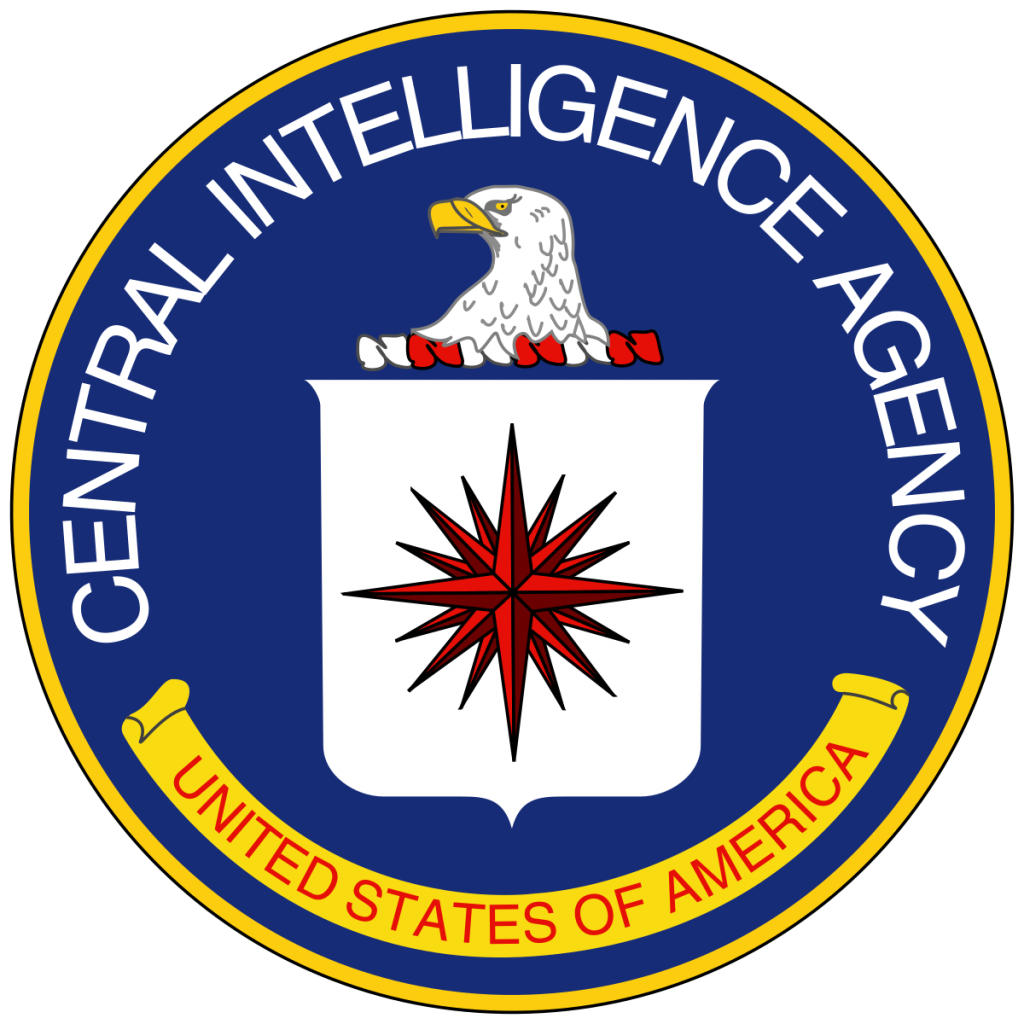
Now you might expect the illicit use of LSD to start with, say, Timothy Leary (who we’ll get to) but the truth of LSD history may surprise you. Some of the earliest abuse was actually by none other than the CIA during Project MK-Ultra, a series of clandestine, illegal ‘mind control’ tests conducted against mostly unwilling and unwitting members of the American public. Only uncovered in 1977, the project was large and far-reaching with LSD far from being the end of it, stretching on for well over a decade. The project began with the Korean war, where unsourced allegations claimed that Soviet, Chinese and Korean interrogators were using some form of ‘truth serum’ in POW camps on Americans. Truthfully, this was likely just a way of explaining around the idea of POW’s becoming anti-war and pro-communist during a McCarthy era. (This is also where the origin of the term ‘Brainwashing’ originates.)
During Project MK-Ultra, started in earnest in April of 1953, some of the earliest experiments involved administering LSD to those in society who “Could not fight back” as one officers so coldly stated. Mental health patients were particularly vulnerable, no doubt creating terrifying and unexplainable experiences for them. Some people were blackmailed while attending CIA-run brothels and in some cases, heroin addicts were simply bribed with the promise of more heroin. Over time, MK-Ultra began heading towards even darker paths with harder drugs and different methods, leading to LSD to fall into disuse around about the same time that it began to become a more commercial drug. With this, then came the other side of illicit LSD use. Along with the birth of the first counter-cultural movements.
Birth of Counter-Culture
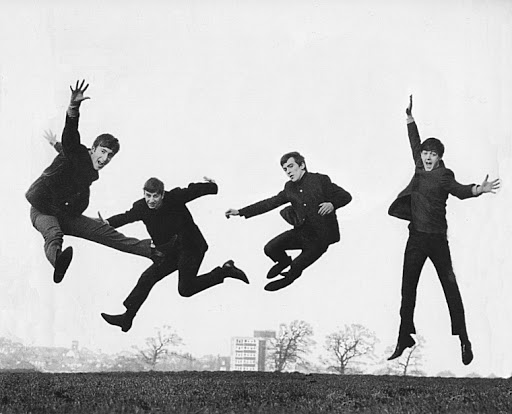
The mid-1960s was truly the birth of the modern counter-cultural movement. Sure, you had some subcultures through the 50s, but they were so deep underground that the mainstream culture may as well have been unaware of them. Elvis Presley shaking his hips a bit was the highest the scandals really got and, sure, while maybe it encouraged some hair-greasing from the guys and panty-sloshing from the girls, it didn’t exactly create a social movement. The predominant superstructure of the world was stuffy and conforming. That is, until The Beatles happened.
I don’t think I can overstate how important this particular element is to the story here. Those dirty mop-tops took the world by storm in the early 1960s and their voices were enormous. When they first visited America, starting the ‘British Invasion’, their meeting with Bob Dylan introduced them to the wonderful herb marijuana. It was around that same time that The Beatles started changing up their music, defying global conventions of being a static boy-band reliant on covers and vapid love songs. Through their growing musical complexity, they began to be seen as ‘voices of a generation’ and oh boy, did this generation have a whole lot to say.
You see, counter-culture was going to happen in the 60s no matter what. The civil rights movement was exploding onto the scene and youth clashing with systemic order and societal norms was becoming seen as a progressive force by some for the first time. Modern reporting on the vicious war in Vietnam stunned audiences who at last could see not just the white-washed image of grizzled US soldiers shooting at hidden jungle Communists, but the image of screaming, wailing innocent victims whose lives had turned to ash in napalm strikes. This wasn’t the Korean war, a dedicated anti-war movement began to engulf society. While surrounded by all of this horror, it’s perhaps not surprising that the hippie movement was right around the corner. Bands such as The Beatles and their contemporaries were merely the ones who happened to lead the way for a time. All the better for LSD history.
Counter-Culture and LSD History
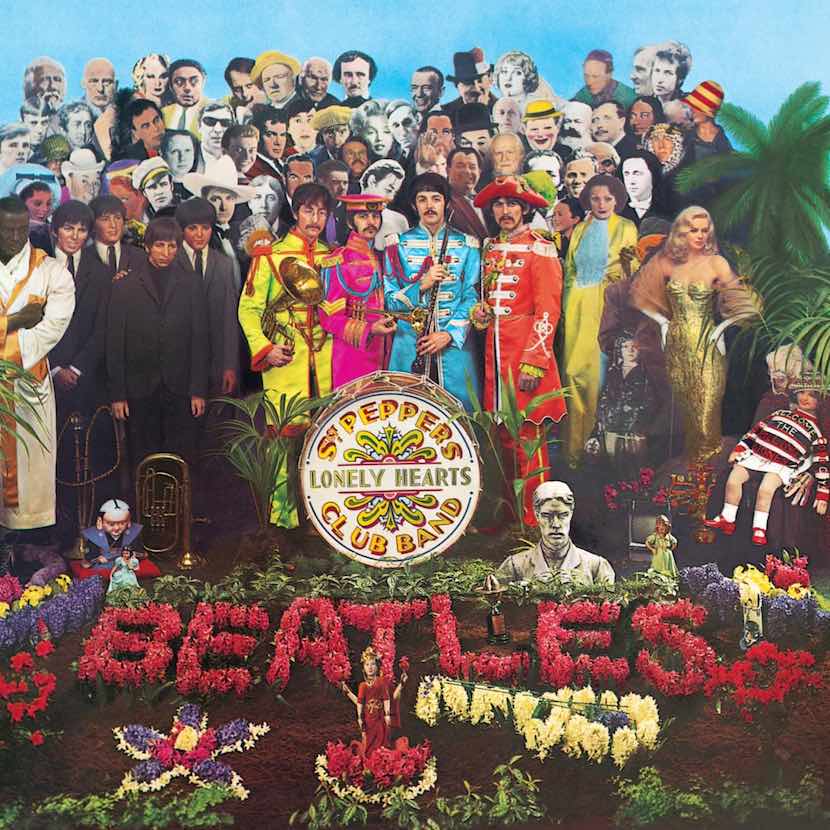
By 1965’s album Rubber Soul, The Beatles had tried acid and had taken to it in a huge way. Their next album Revolver contained a track ‘Tomorrow Never Knows’ which was described by some as the purest distillation of the LSD experience in musical form ever. This was happening in tandem with a growing drug-embracing youth culture, encouraged by figures such as Timothy Leary, a lifelong LSD advocate, one time governor of California candidate and who was once described by US president Nixon as “The most dangerous man in America.” There was also the iconic ‘Merry Pranksters’, who drove a psychedelic bus across the US giving out acid like candy and preparing elaborate music and visual shows, including the talents of Grateful Dead front man Jerry Garcia and many others. As though things couldn’t explode any further, The Beatles at last released the truly iconic album Sgt Pepper’s Lonely Hearts Club Band in 1967, a shamelessly psychedelic masterpiece that quickly became the greatest selling album of all time (at that point), coinciding with the ‘Summer of Love’. And then, less than a month later, Paul McCartney openly states to the press that he’s had LSD and he enjoyed it. Even in 1968, the truly shamelessly psychedelic Beatles movie Yellow Submarine (with some sequences reviewers now acknowledge as likely existing specifically for LSD users) was released theatrically, going on to become a childrens classic. What a time in LSD history. All this, while the drug was still legal!
Throughout 1966 and 1967, LSD’s association with rock stars was widespread and unavoidable. The Beatles had openly acknowledged using it and reports were widespread of the likes of The Who and The Rolling Stones being into it. Lack of knowledge about the drug spread fear, but its widespread availability and popularity made it hard to control. Perhaps the peak could be acknowledged at Haight-Ashbury, a district of San Francisco dubbed “Hashbury” by the famous Hunter S Thompson in 1966. Haight-Ashbury was the origin of the first ‘Head Shop’ for drug implements and it became a center for the Summer of Love in 1967, where a so-called ‘Psychedelic Shop’ was openly available and many lived communally spreading messages of peace and love while embracing music, street performance and art. Building problems did however lead to the symbolic end of Haight-Ashbury by October of 1967. Hey, maybe it just got too cold for a ‘Summer of Love’ to go on any longer.
Legal Restrictions on LSD
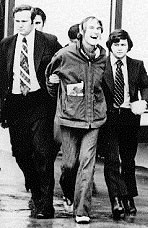
By 1966, governments were getting scared of this wonder drug. But because it still had its uses and culture around the drug had yet to peak, all that occurred was the illegal manufacture and sale of the drug was prohibited. This was fairly lenient since possession was still totally fine. Dealing was still fairly easy to do, since confirming that a paid transaction had taken place essentially would always require a sting of sorts. For those approaching the communal living ways of 1967, there was no stopping this party train. But really, it was inevitable that something had to give. On October 24th of 1968, possession of LSD was made illegal outright in the US, fully prohibiting the drug. Woodstock was still the next year, so we know it took time for the ban to mean shit, but this cemented the collapse of LSD through the 1970s. A dark time in LSD history and the final nail in the coffin was the United Nations Convention on Psychotropic Substances, adopted in 1971 which required all signing parties to prohibit LSD, essentially making the ban global. (Though not entirely globally, which I’ll get to another time.)
Police were cracking down hard, particularly on rock stars. Production facilities were getting shut down and many of the major advocates were now in prison, Timothy Leary getting a ten year sentence on January 21st of 1970. Though the story of this particular instance is deserving of an article in its own right, with Nixon’s psychotic Wily Coyote pursuit of Leary only getting more ridiculous as time went on. Despite all that silliness, LSD was rapidly losing its relevancy.
Augustus Owsley Stanley III is one lesser known major figure. Having designed the sound system for The Grateful Dead, it’s hardly surprising that he was big into LSD. Due to how unknown the chemical was to many at the time, hardly anyone knew how to actually make it themselves. Owsley knew how and he stated that between 1965 and 1967, he produced 500 grams of LSD. Now, that sounds like little, but remember, the threshold dose is absolutely tiny. For a standard LSD blotter, 500 grams amounted to 5 million doses. He very likely was the key figure in LSD production during the 60s, being particularly well known by rock stars up to and including The Beatles. Due to this huge production, his arrest in late 1967 didn’t necessarily kill LSD right away. He was out by 1970, but then back in again from 1970 to 1972. In this time, the production of LSD undoubtedly went through the floor.
Later LSD History and Conclusion
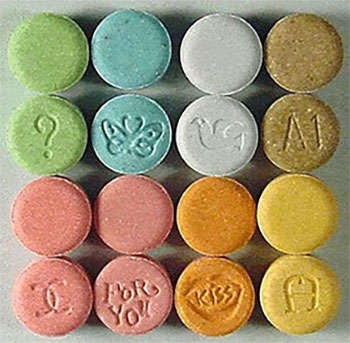
LSD saw a resurgence in the 1980s due to its synergy with another new drug, MDMA or ‘Molly’, also known as Ecstasy in certain forms. (Which I’ll definitely discuss another time.) Its popularity has come about in ebbs and flows, with a new boom over the last decade or so. LSD is no longer on the world stage with its attention-grabbing headlines, high-profile police raids and world-grabbing celebrities promoting its use. Some have predicted that LSD will be moving into legal territory once more with the gradual acceptance of marijuana, with many private clinical trials for medicinal LSD use already under way. You can never tell what will happen in LSD history, but… Still, the culture just isn’t the same as it was in the 1960s.
But wait, what happened in the 60s exactly? There was Haight-Ashbury in 1967 and there was Woodstock in 1969. What other really major events were there? Well, I can tell you, there’s far more now. Of course these festivals are not drug festivals explicitly, psychedelia goes far outside just what people pump into their brains to see cool colours, but there’s a very obvious link and the organisers of these festivals are aware of it. Many of them have on-site drug testing to ensure purity and promote harm reduction as opposed to simply arresting everyone with dilated pupils.
Neo-psychedelia is a thing in the music scene and while it’s more underground now, it’s not as if it went away. If anything, it may just be that The Beatles for instance existed at a very specific time. Before The Beatles, you had very distinct genres of jazz, blues, rock and roll and some more. After The Beatles, the boundaries started to collapse with jazz rock, blues rock, general rock as opposed to rock and roll, with many more genres like psychedelic rock outright being created. The Beatles were leading a charge and we’re living in the after-effect, where now we have dozens of different genres to cater to any specific psychedelic need! You certainly couldn’t get acid house music from Paul McCartney… Though given some of his other songs, it maybe isn’t totally off the table.
So LSD history is still a story being written. For legal purposes, I’m not condoning the use of the drug. People far more educated than I can attest to the horrific terrors that can be caused by a ‘bad trip’. No, it won’t make you go insane forever, but the effects of being attacked by a fake knife-wielding maniac can create psychological trauma just as assuredly as being attacked by a real knife-wielding maniac would. For those looking for harm reduction, I’d strongly recommend the Youtube channel PsychedSubstance who, as he explains, hopes to educate others through his own past mistakes.
Also, if you are going to take LSD or any drug for that matter, get a goddamn test kit. It doesn’t matter how well you can handle your drugs if it turns out to be completely fake and just kills you instead. This can and does happen because drug dealers are often either not the smartest or not the most moral of people. With this new era of wide information, where I can tell you this and you can get a test kit with no legal troubles whatsoever, there’s possibly never been a safer time to be into these substances… Again, not that I condone it.
Just remember. Turn on, tune in, drop out. Be safe out there.
